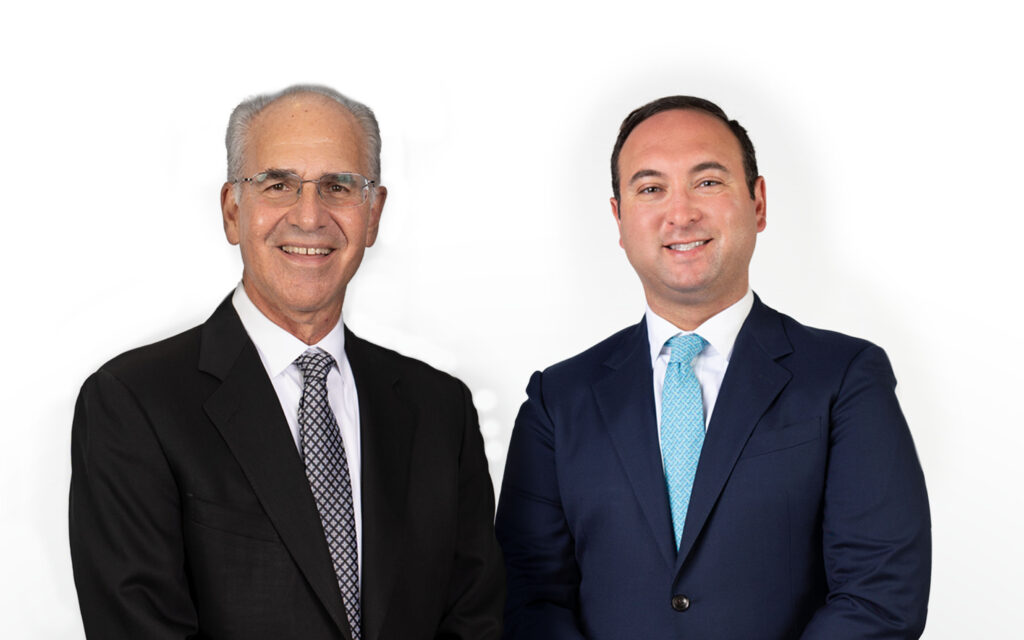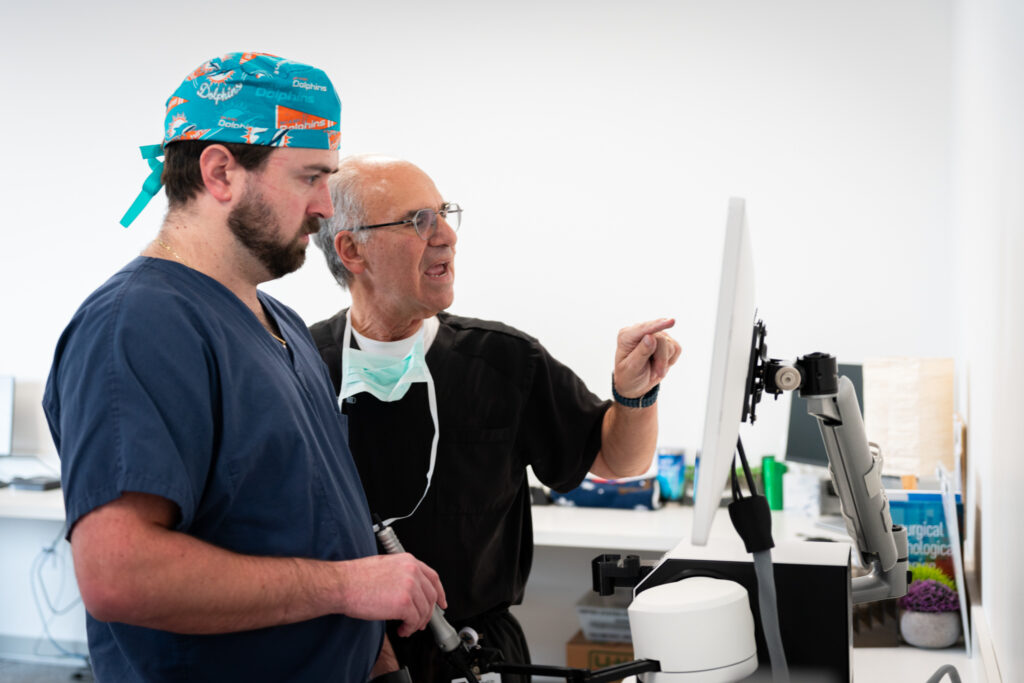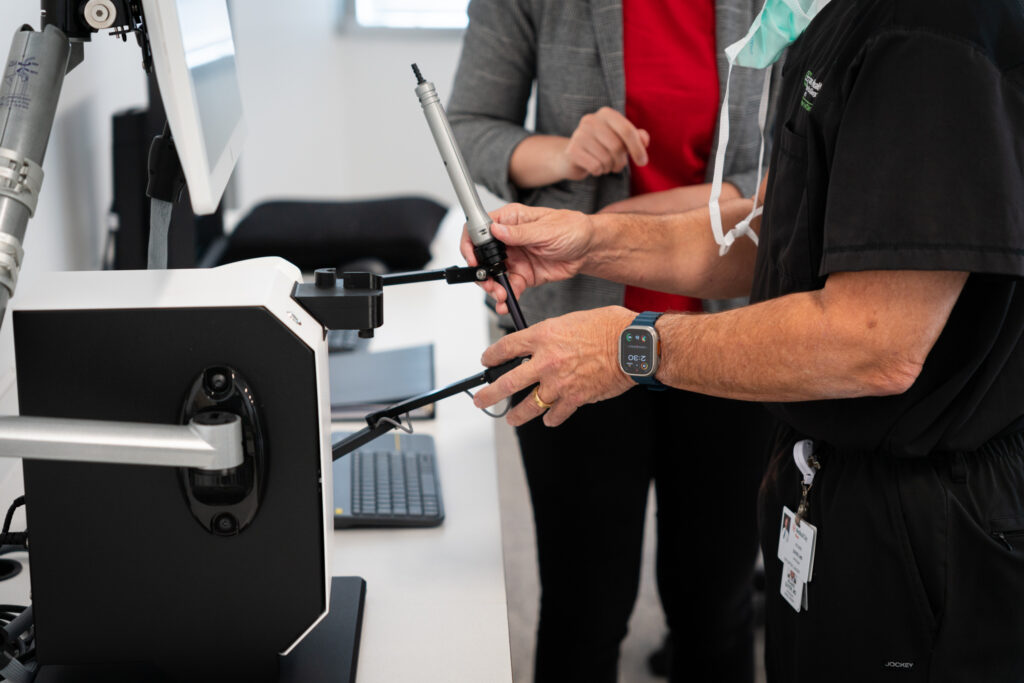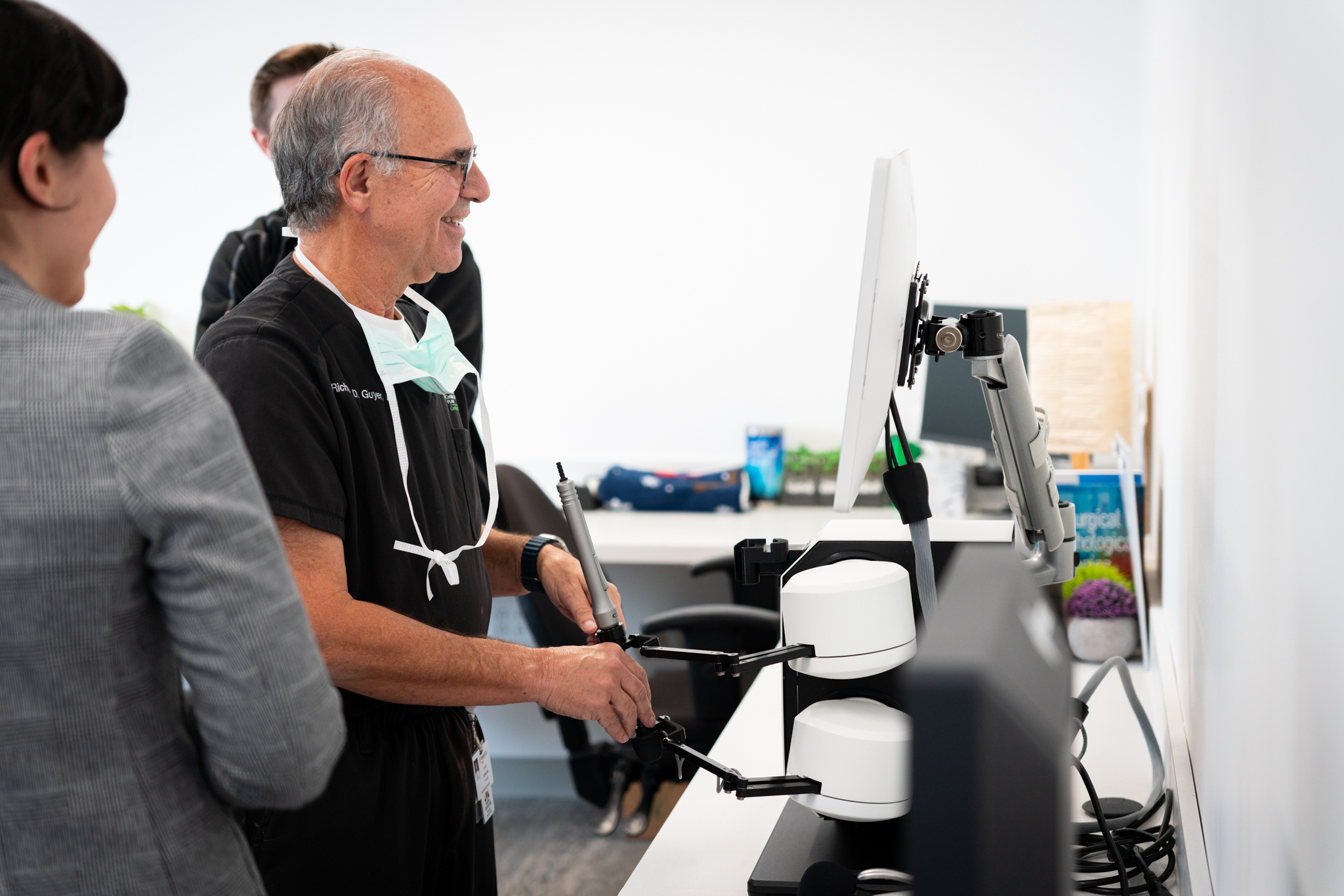Becoming a skilled spine surgeon involves more than just an intellectual understanding of anatomy. A highly skilled surgeon must have the confidence and practical experience to move beyond the medical textbook and perform life-changing procedures in an operating room. The challenge of doing this is immense.
It involves developing the physical skills that surgical procedures require, and this demands constant practice and training. In the not-so-distant past, this surgical training—performing incisions or removing damaged bones or tissue—involved the use of cadavers for teaching proper surgical techniques. Now, the world-class surgeons at Texas Back Institute are being trained with amazing simulators that use virtual reality to mimic the look, and more importantly, the feel, of real surgical procedures.
What This Means for You — Becoming a spine surgeon requires a superior knowledge of the spine and the delicate nature of its nerves, tissue, and bones. It is also physically demanding for the surgeon performing the procedure. Texas Back Institute, long a leader in leading-edge technology, has continued this leadership in training young surgeons with state-of-the-art spine simulators.
The surgeons at Texas Back Institute are experts at diagnosing spinal conditions and, if necessary, performing surgical procedures that are minimally invasive and effective for patient success. Technology for surgical training has played an integral role in this success. If back pain is affecting your quality of life, click here to speak with a spine expert.
High Fidelity Training

(Left- Dr. Richard Guyer; Right- Dr. Alexander Satin)
Recently, Dr. Richard Guyer, a spine surgeon and one of the founders of Texas Back Institute, and Dr. Alexander Satin, also a spine surgeon and mentor to young surgeons, explained what training innovations are being tested now at the practice.
“At Texas Back Institute, surgeons and fellows can now train and perfect their skills for spine surgery through this high fidelity haptic simulator technology,” Dr. Guyer said. “This provides real-time feedback and detailed surgical training steps for many of the common spine surgeries. This simulator has an ultra-precise virtual anatomy and fluoroscopy images with more than 25 surgical instruments for the surgeon to use.
“Much like the training of pilots on simulators, we are moving towards the use of simulators in spine surgery training.”

Haptic Skills and Surgery
According to the National Library of Medicine, “Haptic skills are crucial to learning surgery. It is of utmost importance for a surgeon to learn how to handle tissues safely, how to feel the dissection plan.
“These haptic skills are essential for the safe use of surgical instruments, spatial representation, understanding limits, and evaluation of surgical risks at each step of a procedure. In surgery, the risk of regular training with a simulator lacking realistic haptic rendering is to provide a negative transfer in the operating theater, where the learner might apply dangerous forces that are possibly difficult to untrain later.”
Video Games and Surgical Training

Video gamers, who can feel the jolts and vibration of the game’s activity through a “joystick,” appreciate the importance of high-fidelity haptics for gameplay. However, most non-physicians wouldn’t consider its importance in training surgeons. Why is developing an accurate sense of sensory resemblance (auditory, visual, and tactile) important for this training?
Dr. Satin notes, “Haptics, which is the use of electronically or mechanically generated movement that a user experiences through the sense of touch, provide a realistic feel of the instruments as they encounter different tissues such as ligaments and bone. For example, when using bone drills on the simulator, one gets the same feedback as actual surgery. Creating realistic simulations is critical for training.
“We believe surgeons should be trained first on simulators rather than the traditional way of being taught in the operating room on live patients. Virtual reality creates a reproducible, safe, and no-waste solution for surgeon training.”
The programming in this simulator teaches surgeons to use more than 25 surgical instruments.
Dr. Satin said, “This simulator includes the core instruments and procedures utilized in spine surgery practice. The whole purpose is to create ‘muscle memory’ and familiarity with the handling of the instruments.
“One advantage of this virtual training is that feedback is given instantaneously by the program. Plus, the surgeon can compare his or her performance at different time intervals.”
Listen to the podcast episode with Dr. Satin on How a High Fidelity Spine Surgery Simulator is Using Virtual Reality to Train Young Surgeons
Why Texas Back Was Chosen for This Simulator Test
The expertise, both in training and patient outcomes, of Texas Back Institute is recognized throughout the world. It is no surprise that medical technology developers want the organization to evaluate new products.
“Texas Back has always been an innovator in new technology and a leader in spine surgery for nearly 50 years,” Dr. Guyer said. “We have trained over 150 spine fellows who practice throughout the US and have a large sphere of expertise.”
We believe simulators will eventually supplant cadaver labs. In fact, we are in the process of creating our own Cadaverless Simulation Lab and Training Center at TBI. This will allow us to provide unparalleled, lower-cost training to surgeons from all over the world.”
Exemplary training is an important part of the Texas Back Institute’s value proposition. Using leading-edge technology for training surgeons is another way patients can feel confident in the treatment of spine conditions. Click here if you need relief from back pain.

